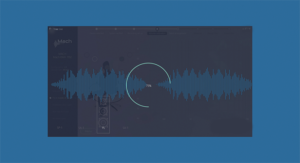TRADITIONAL vs ELECTRONIC ACOUSTICS

IS THIS AN OFFSHOOT OF “ANALOG VS DIGITAL” DISCUSSION?
Traditional acoustics and electronic acoustics control represent two different approaches to managing and manipulating sound within a given space. Here’s a comparison between these two methods:
Traditional Acoustics:
- Principles:
- Traditional acoustics relies on physical and architectural design principles to control the propagation, reflection, absorption, and diffusion of sound waves in a space.
- Materials:
- Materials such as acoustic panels, diffusers, bass traps, and sound-absorbing materials are strategically placed to influence the acoustical properties of a room.
- Room Shape and Design:
- The physical structure of the room, including its shape, dimensions, and surface materials, plays a significant role in determining how sound behaves within that space.
- Limitations:
- Traditional acoustics has limitations in terms of real-time adaptability. Once a space is designed and constructed, it may be challenging and costly to make significant changes to its acoustics.
Electronic Acoustics Control:
- Principles:
- Electronic acoustics control involves the use of technology, such as digital signal processing (DSP) and electronic devices, to actively manipulate and control the sound within a space.
- Active Systems:
- Active acoustic control systems use microphones and sensors to analyze the acoustic environment in real time. Based on this analysis, they apply electronic adjustments to the sound, such as adjusting equalization, adding reverberation, or canceling out specific frequencies.
- Adaptability:
- Electronic acoustics control offers a high level of adaptability. Changes to the acoustic environment can be made in real time, allowing for flexibility in adjusting the sound characteristics of a space.
- Limitations:
- Electronic acoustics control may have limitations in terms of cost, complexity, and dependence on technology. It requires specialized equipment and expertise for installation and maintenance.
Hybrid Approaches:
- Integrated Systems:
- Some environments may benefit from a combination of traditional and electronic acoustics control. For example, a performance venue might use traditional acoustics for overall sound shaping and electronic control for real-time adjustments during different events.
- Customization:
- Hybrid approaches allow for customization based on specific needs. The combination of physical acoustics and electronic control can be tailored to achieve the desired sound experience.
Considerations:
- Cost:
- Traditional acoustics control may have a lower upfront cost, while electronic acoustics control can be more expensive but offers greater adaptability.
- Maintenance:
- Traditional acoustics generally require less ongoing maintenance, while electronic systems may need regular updates and calibration.
- Flexibility:
- Electronic acoustics control provides greater flexibility for adapting to different events and requirements, making it suitable for multipurpose spaces.
The choice between traditional acoustics and electronic acoustics control depends on factors such as the intended use of the space, budget considerations, and the desired level of adaptability.
In many cases, a combination of both approaches may offer the most effective solution.